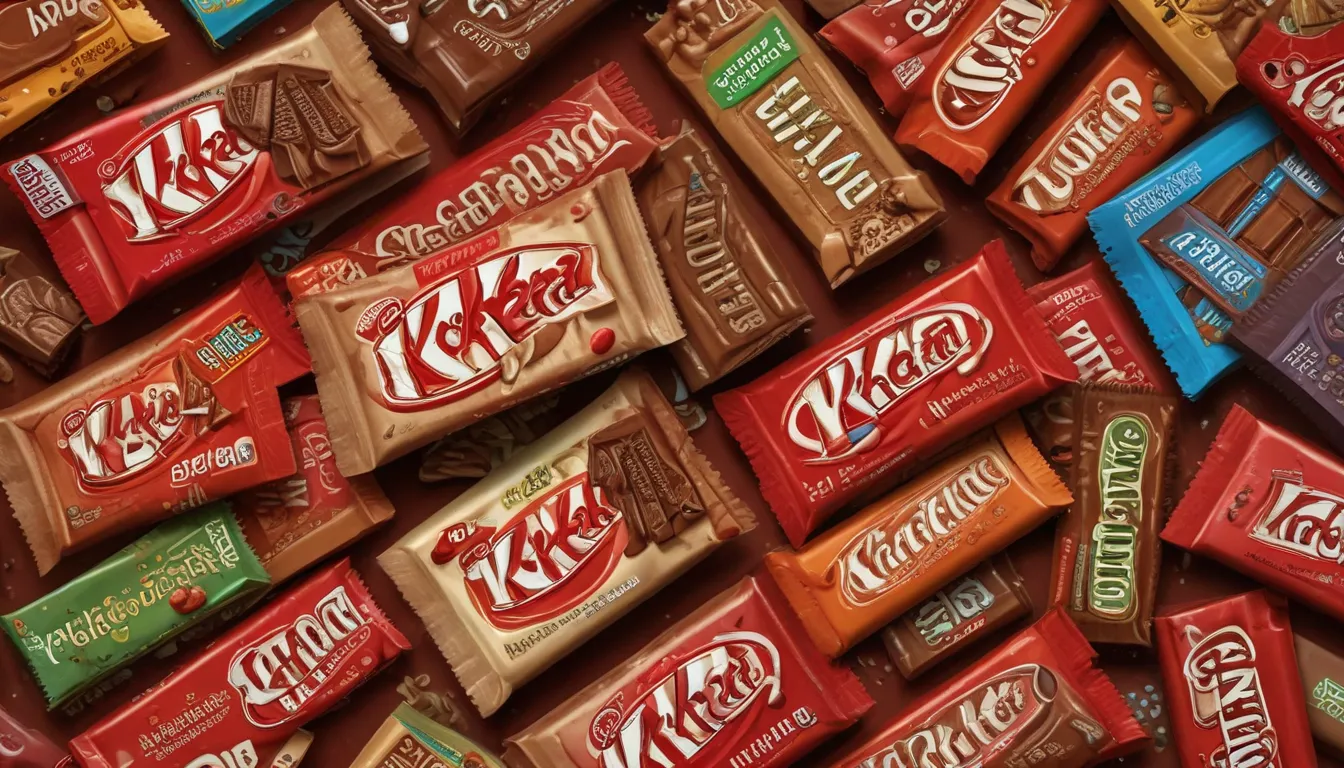The pictures in our articles might not always show exactly what the text is talking about. We use these images to make the article more interesting and eye-catching. They are there to add to the text, but not to replace it or show every detail.
Are you a fan of Kit Kat bars? These iconic chocolate treats with layers of crispy wafers encased in smooth milk chocolate are a beloved indulgence for many. But have you ever stopped to consider the nutritional value of these delicious snacks? In this article, we will unravel 11 surprising Kit Kat bar nutrition facts that you may not be aware of. From calories and fat content to vitamins and minerals, let's delve into the details to understand the nutritional profile of Kit Kat bars better.
Key Takeaways:
- Kit Kat bars pack around 210 calories, 11g of fat, and 21g of sugar. Enjoy them in moderation as part of a balanced diet and active lifestyle.
- While some Kit Kat bars are gluten-free, they contain milk, wheat, and soy. Check the packaging for allergens and savor the various flavors in moderation.
Calories:
A single Kit Kat bar contains approximately 210 calories, making it a moderate calorie snack option.
Fat Content:
Each Kit Kat bar consists mainly of carbohydrates and fats, providing around 11 grams of fat per serving, with a small amount of saturated fat.
Sugar Content:
One Kit Kat bar contains about 21 grams of sugar, which is equivalent to approximately 5 teaspoons of sugar.
Protein:
Despite being a sweet treat, a Kit Kat bar offers a small amount of protein, with approximately 3 grams per serving.
Fiber:
Unfortunately, Kit Kat bars are not a significant source of dietary fiber, containing only about 1 gram per serving.
Vitamins and Minerals:
While Kit Kat bars do not boast a wealth of vitamins and minerals, they do contain a small amount of calcium and iron.
Serving Size:
The recommended serving size for a Kit Kat bar is typically a single four-finger bar, making portion control easier.
Allergens:
Kit Kat bars contain milk, wheat, and soy ingredients, which may not be suitable for individuals with allergies or dietary restrictions.
Gluten-Free Options:
For those with gluten sensitivities, some variations of Kit Kat bars are gluten-free. Always check the packaging for specific information.
Variations:
Kit Kat bars come in a variety of flavors and sizes to cater to different taste preferences and portion sizes.
Enjoyment and Moderation:
While Kit Kat bars may not be the healthiest snack choice, they can be enjoyed in moderation as part of a balanced diet and active lifestyle.
Conclusion:
After exploring the 11 Kit Kat Bar Nutrition Facts, it's evident that while Kit Kat bars are a tasty treat, moderation is key. Despite their moderate calorie content, they do contain a significant amount of sugar and saturated fat. Being mindful of portion sizes and incorporating them into a balanced diet is essential for enjoying Kit Kat bars guilt-free.
FAQs:
- How many calories are in a Kit Kat bar?
- A single 1.5 oz (42g) Kit Kat bar contains approximately 210 calories.
- How much sugar is in a Kit Kat bar?
- There are about 21 grams of sugar in a 42g Kit Kat bar.
- How much fat is in a Kit Kat bar?
- A Kit Kat bar contains around 11 grams of fat, with 7 grams being saturated fat.
- Are Kit Kat bars gluten-free?
- No, Kit Kat bars are not gluten-free due to the presence of wheat ingredients.
- Can Kit Kat bars be included in a vegan diet?
- No, Kit Kat bars are not suitable for a vegan diet as they contain milk and other animal-derived ingredients.






